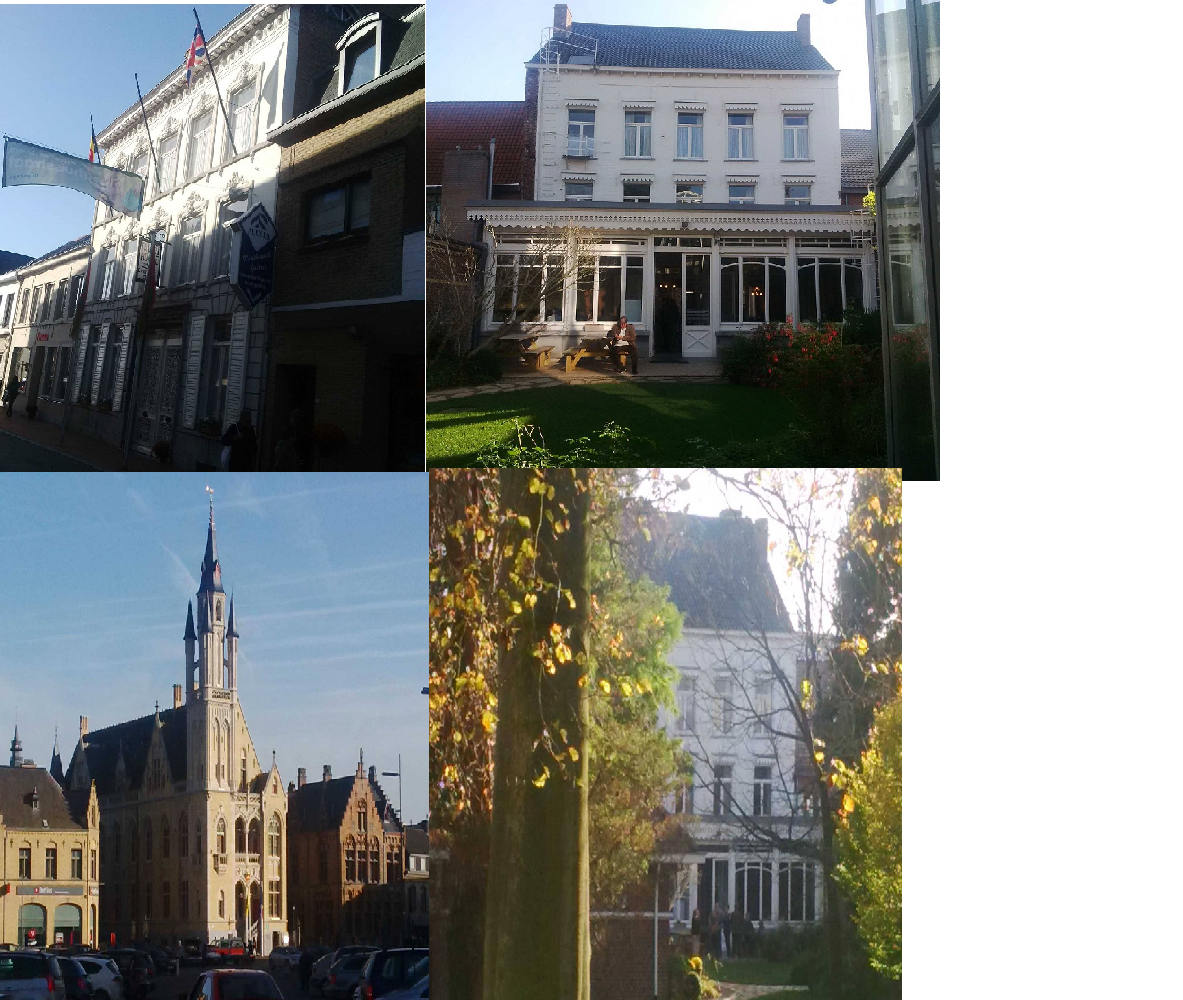In The Long Way Home, the story focusses on Dafydd Thomas’ journey through the Great War in the Railway Operating Division – and his emotional ties back home. He is posted to the western front at a depot in Poperinge. This was one of only two Belgian towns not invaded during the war and was very important to the British, but somehow its tale is lost to many for that of its larger neighbour Ypres.
Ypres (Pronounced Eep-er ) or modern-day Ieper, was a strategic point on the western front, representing a point of Belgium that the German Army looked to sweep through into North-West France under the Schlieffen Plan. Captured by the British in the first Battle of Ypres in 1914, the town became a focal point for conflict and suffered two more major offensives . the third (and final) one of these, in 1917 is referred to as the battle of Paschendaele. By the end of the war, Ypres was merely rubble, including the famous medieval Cloth Hall, now lovingly rebuilt.
What of Poperinge (pron. Popp-er-inger, as in finger…)? A town about a third of the size of Ypres, it lies eight miles west of Ypres and about forty from Dunkirk ferry port. It soon became the main billet for the British Army and also the main casualty centre. The town became a sea of khaki; men en route forward, men returning from their stint on the front line, the wounded and the damned. The posts to which condemned men were tied for dawn executions are still visible at the Town Hall. Thus ‘Pops’ offered everything and nothing to the soldiers.
The place was bustling. What had been a sleepy hop growing town of 10,000 people, now played host to 250,000 tommies. ‘Little Paris’, as it was known, gained a reputation as somewhere for recreation – Of all kinds! Within this scenario, Talbot House was founded.
A grand three-story 18th Century house, it had been abandoned by its owner. It was re-established as a venue by one of the Army chaplains in the area – the Reverend ‘Tubby’ Clayton. Named Talbot House, after Gilbert Talbot, who had died in 1915. He was the brother of the sponsor who promoted Tubby’s project to the Army.
Tubby’s idea was quite simple, to establish a club for soldiers to come and forget about the war. Seemingly impossible, given the constant noise of artillery in the air but Tubby succeeded, One of his main tenets, was this was a club where everyone was treated equal. A sign greeted arrivals to ‘Abandon rank all ye who enter here’.
The three storied building played host to a library, reading room, games like table tennis, a concert hall and a large walled garden. A chapel was set up in the attic. Here was an alternative to Poperinge’s seedier options. A place of sanctuary, where men could forget for a short while the privations of their lot. A place where a common soldier could talk to a senior officer as an equal, with no recourse. The building and annexed warehouse also provided the chance of limited accommodation for soldiers.
It was a place for exhausted battle-scarred soldiers to rest, without rank or enforced discipline. You would have expected the place to fall into ruin. Yet, instead this was the underlying reason for its success. Talbot House became a beacon of light for many people during the Great War.
Because of its importance, Poperinge was also a railway hub. A locomotive depot was set up there in 1915, albeit one where the barracks for the crews were merely ancient rotting Belgian wagons and coaches. It became less important during 1916, as a repair facility was set up further west in Borre in France. However, it was still a place where crews would be present and trains would be loaded and unloaded . Imagine being posted to a military base, close to the front, with something like Talbot house on the doorstep!
Poperinge itself survived the last German push of 1918, although as a precaution, the railway infrastructure were evacuated back to Borre, right down to the last lump of coal. they had already had an occasion North west of Ypres, when a Commonwealth crew had unwittingly driven into enemy lines and been captured.
After the war, Talbot House was given back to its owner. When he sold it in 1929, it was snapped up with the help of Lord Wakefield and Talbot House was restored under Paul Slessor, to the gem it is today. Tubby went back to Blighty in 1918 and set up a new ‘Talbot house’ in London, under the banner ‘Toc H’. From this beginning, it grew to become a worldwide charitable organisation.
I have visited ‘Pops’ on two occasions and had the great pleasure in staying in Talbot House. The whole area, is one of quiet remembrance. My grandfather fought at Paschendaele. My grandmother’s brother died there and is on the RWF wall at Tyne Cot. Possibly both were in Poperinge and being chapel boys, maybe they would have visited Talbot House. The one abiding feeling I have when I enter the House and especially the garden is a feeling of great calm. I am perhaps a spiritual, rather than religious person, but I can understand the appeal of it to the men in the Great War. From the moment you are through the door, it is like you have cut out the trials and tribulations of life for a fleeting moment. yet that moment really is something to cherish.
Anyone who would like to know more, please browse this link:
